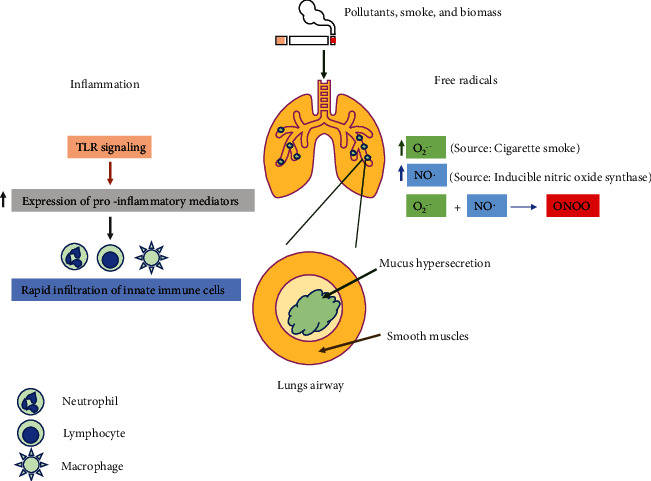Figure 1.

The pathophysiologic processes involved in COPD. Pollutants, cigarette smoke, and biomass induce excessive generation of oxidative and nitrosative stresses including superoxide, nitric oxide, and peroxynitrite radicals. These radicals further activate the p38MAPK and NF-κB proteins which then upregulate the expression of genes and proteins involved in the inflammatory pathway. Additionally, smoke and pollutants also induce TLR signaling and initiate the inflammatory response by augmenting the expression of proinflammatory mediators. This led to the rapid infiltration of innate immune cells including neutrophils, macrophages, and lymphocytes. These cells release many proteases which stimulate mucus hypersecretion in COPD patients.
